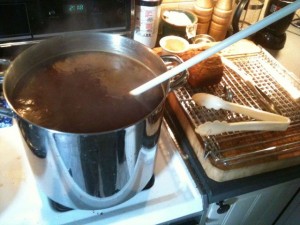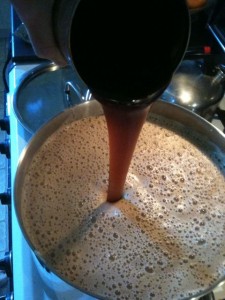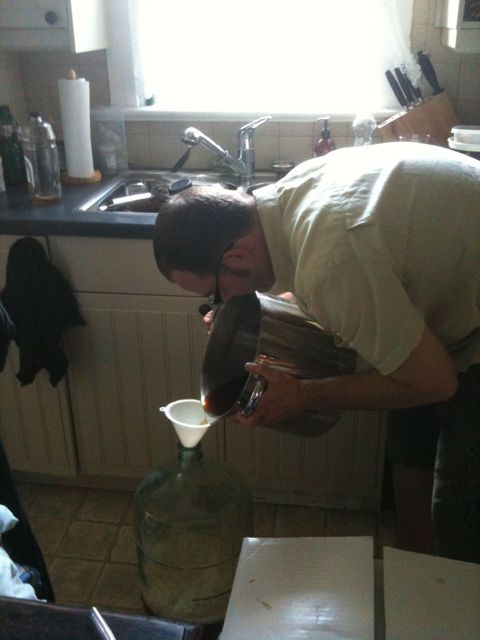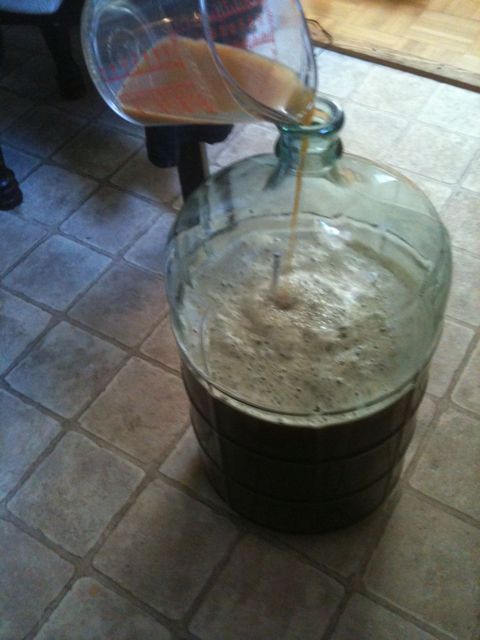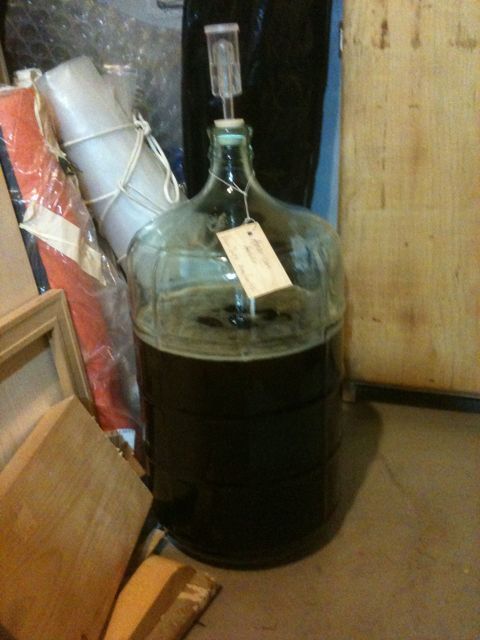Yesterday was a great day to take off work and make beer.
Even tough it took about five hours from the time I began sanitizing until the time I plugged the fermenting jug, it was a very good use of a vacation day. There’s something relaxing about stirring a boiling pot of wort for an hour.
With any luck, I’ll have a drinkable American Amber ale in about two weeks.
First, I had to sanitize everything. This was a drag because I really don’t like working with bleach. The way some people don’t like to pick up worms, kind-of don’t like. Anyway, I did it, and then realized that the bleach I used was too old and wasn’t really bleachish any more so I had to do it again with newer bleach.
As you can imagine, I was really happy to do this step twice. This accounted for the total elapsed time being so long. Well, that and the fact that I read everything three times because I didn’t really know what the hell I was doing.
I started off by bringing 2.5 gallons of water (approximately 9 litres) to about 150 degrees Fahrenheit. Then I put the crushed grains into the water to soak for 20 minutes. I had emptied the crushed grains from the package into the cheesecloth-like sock thing they gave me in the kit. This allowed an infusion of the grain’s essence into the water to create the wort.
At first, I thought the stirring spoon was ridiculously long.
Then I stirred the wort with it.
Once I added the two malts — Amber spray dried malt, and a dark, syrupy, liquid amber malt extract — the brew pot became rather frothy.
The long spoon came in handy at this point. Once it settled I added the hops (Brewer’s Gold Bittering Hops) and stirred for 55 minutes. The long spoon also came in handy at this point — it’s a pain to stir for a long time. I had to keep stirring to prevent the roiling boil from burning to the bottom of the pot. After 55 minutes I added the second hops, Willamette Aroma, and boiled for another 5 minutes.
I turned the heat off and placed the brew pot straight into ice water to chill the wort. It helped that the window was open and the breeze cooled the surface. I could see the sediment — what I understand is called the trub — separate from the liquid.
I then poured the wort into the fermenting jug (which I really hope is sanitized enough), being careful not to pour that darn trub into the jug as well. Some people siphon. I’m not that sophisticated.
Then I added another 2.5 gallons of water — about equal to the wort’s volume. I’m not sure I got this right either since there was a good bit of liquid left in the trub, probably 500mL at least. I just used the rest of the 5 gallon bottle I bought.
Then I had to do the yeast thing. I warmed (not hotted!) the water and then added the little yeasty tubules and let them do their little chemical reaction action.
I added a wee bit of the wort to the yeast goo to get the temperatures right and not kill the yeast. Then I added the yeast mixture to the wort.
Once all the flavoured, chemical-laden warm water was in the jug I had to use the hydrometer to check the Specific Gravity against the Original Gravity. I don’t think I did this step at all well, so I may have botched the entire thing. I’m not sure. We’ll see. Anyway, it only tells the alcohol content; if it’s drinkable I’ll be able to tell how much alcohol is in it within one or two bottles, so I’m not so concerned. Actually, I’m a lot more concerned about the sanitizing. I don’t want those yucky bacteria nuking my brew.
Nevertheless, I bottled the whole mess and now I’m waiting.
I figure if medieval farmers could make it, so could I.


